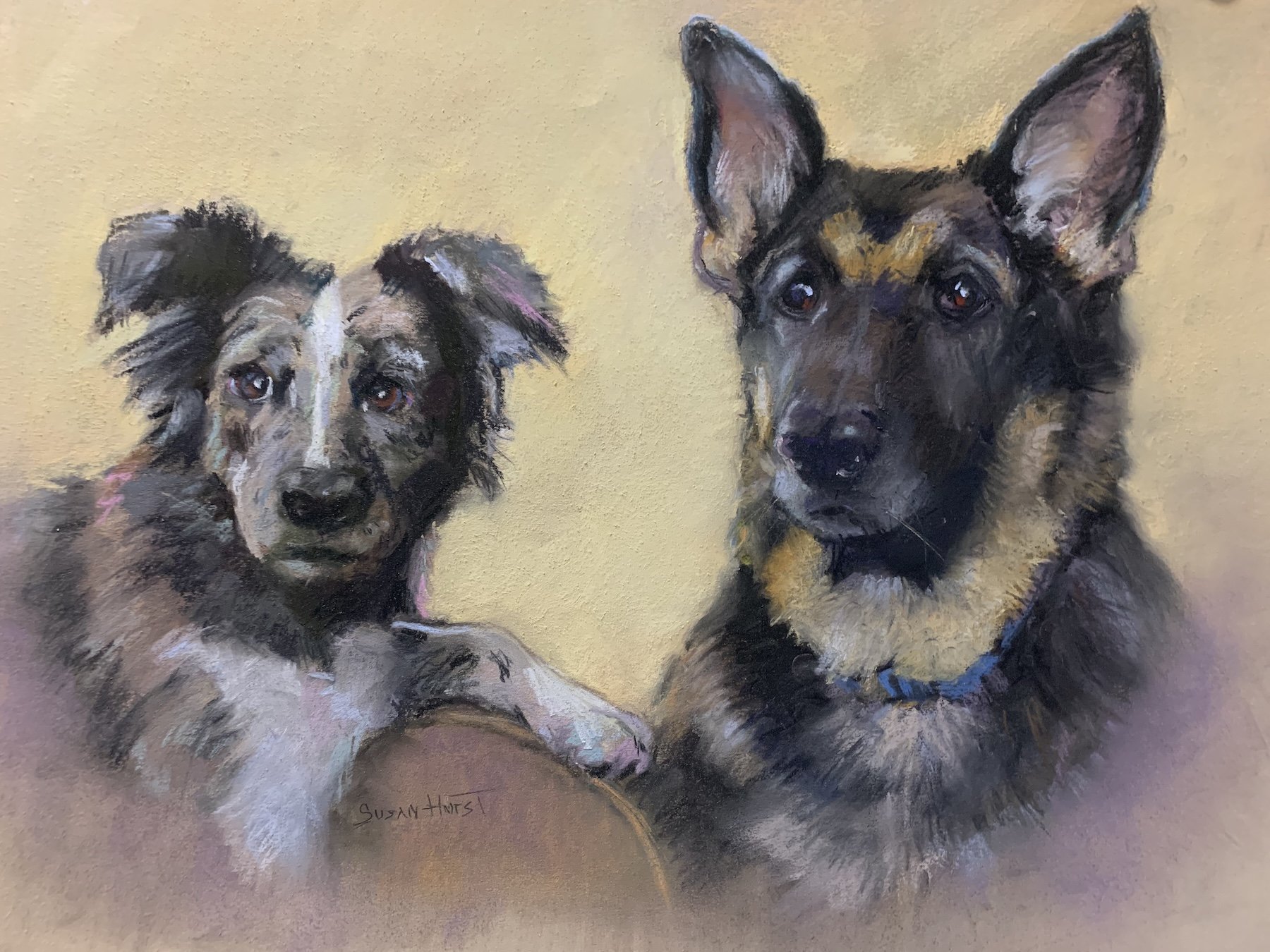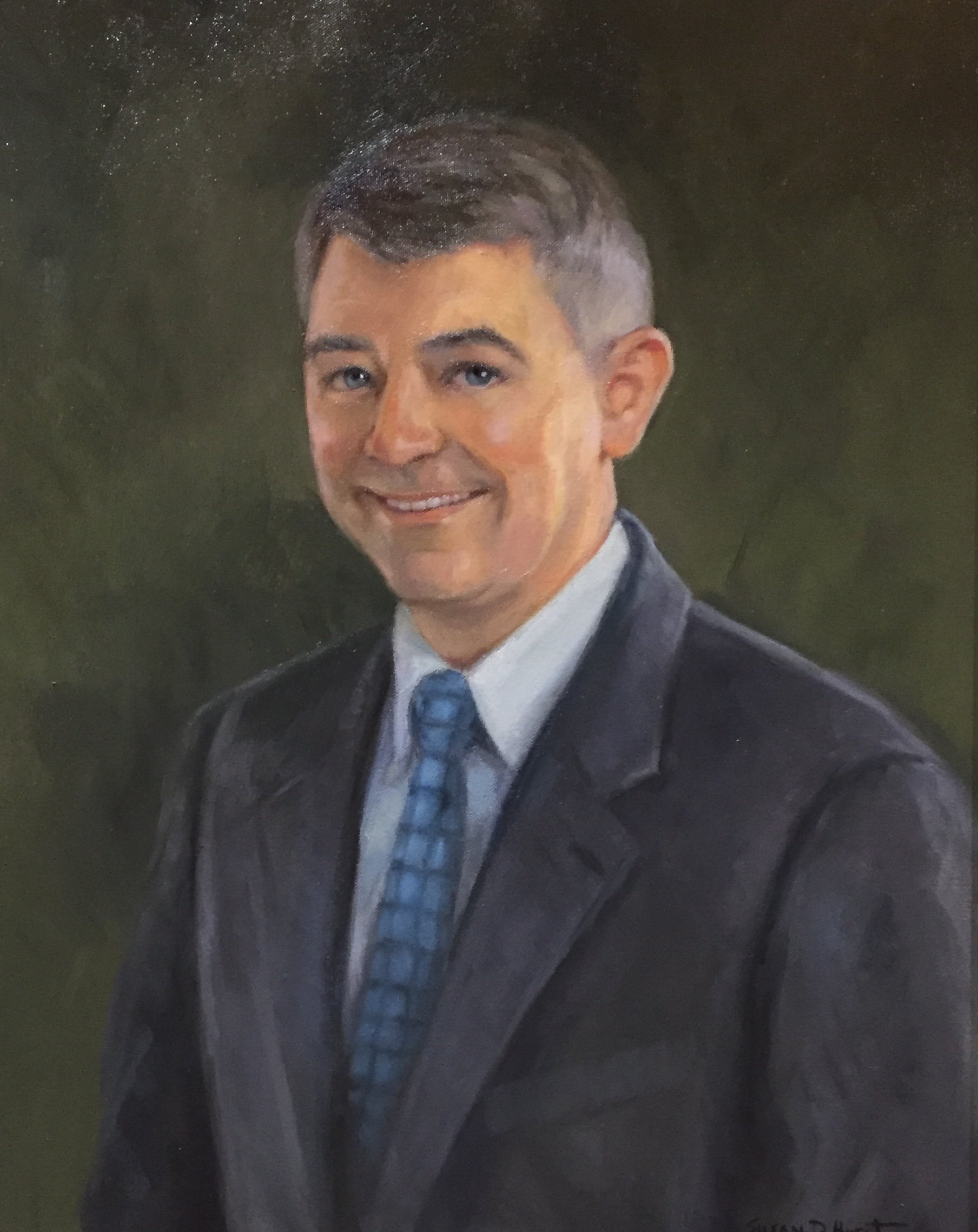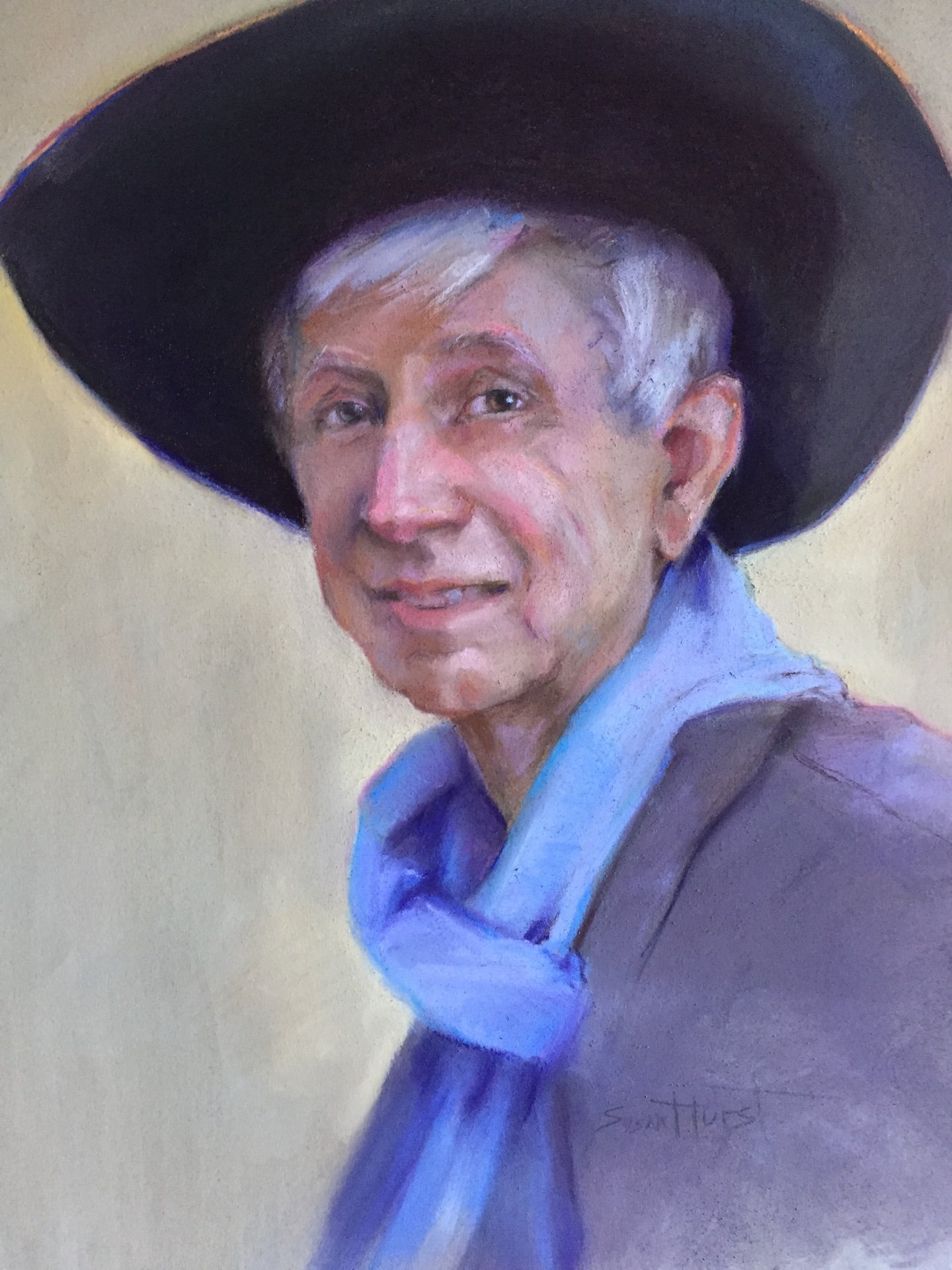Interview with artist Susan Hurst
Susan Hurst is a Little Rock artist originally from Ohio. Her award-winning portraits and landscapes are in numerous private and corporate collections throughout Arkansas and Ohio. She is a Signature Member of the Arkansas League of Artists and the Arkansas Pastel Society, an Associate Member of the Pastel Society of America, and in the Master’s Circle of the International Association of Pastel Societies. More of Susan’s work can be found at Art Group Gallery in Little Rock and at her website susanhurstart.com.
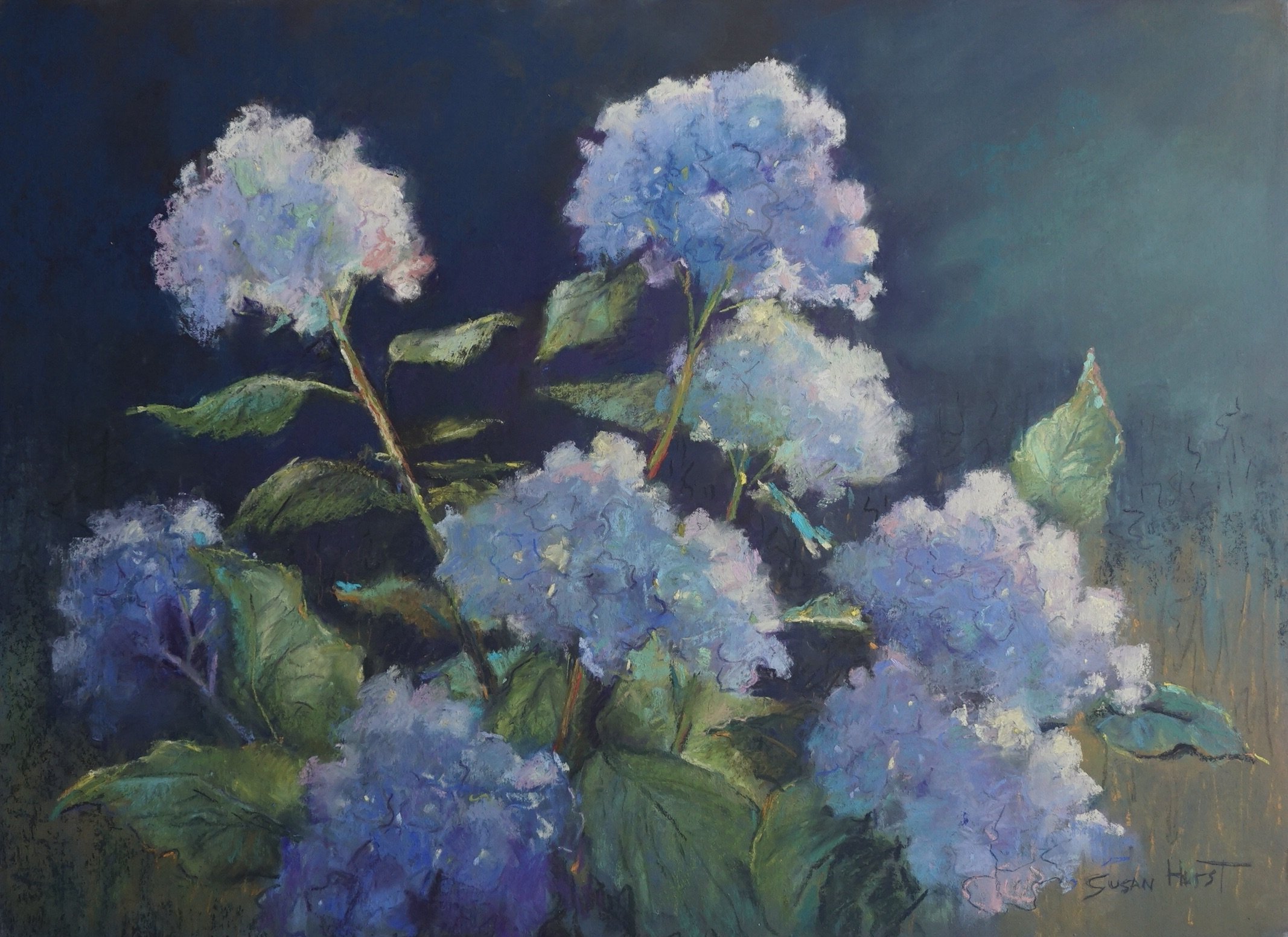
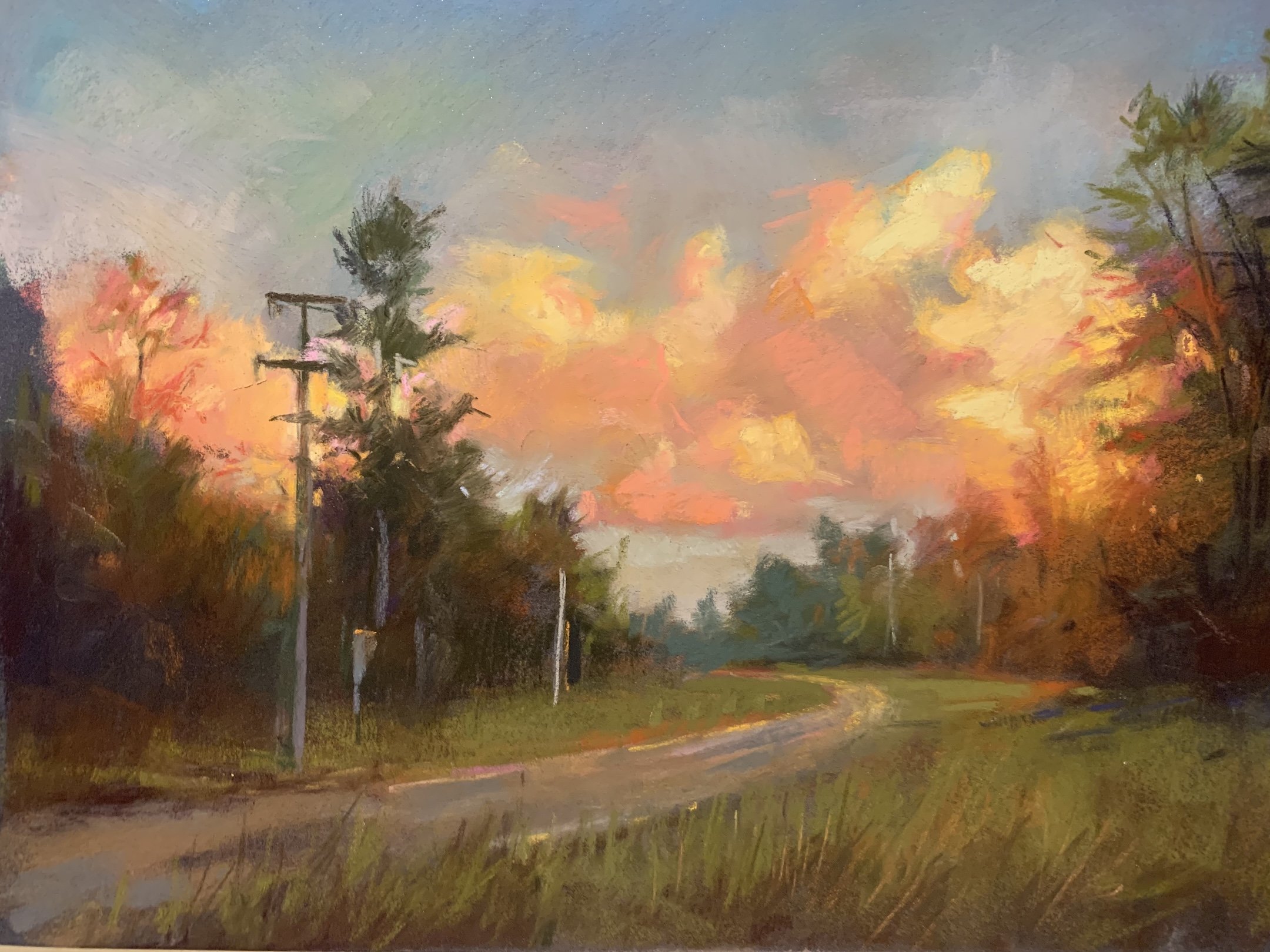

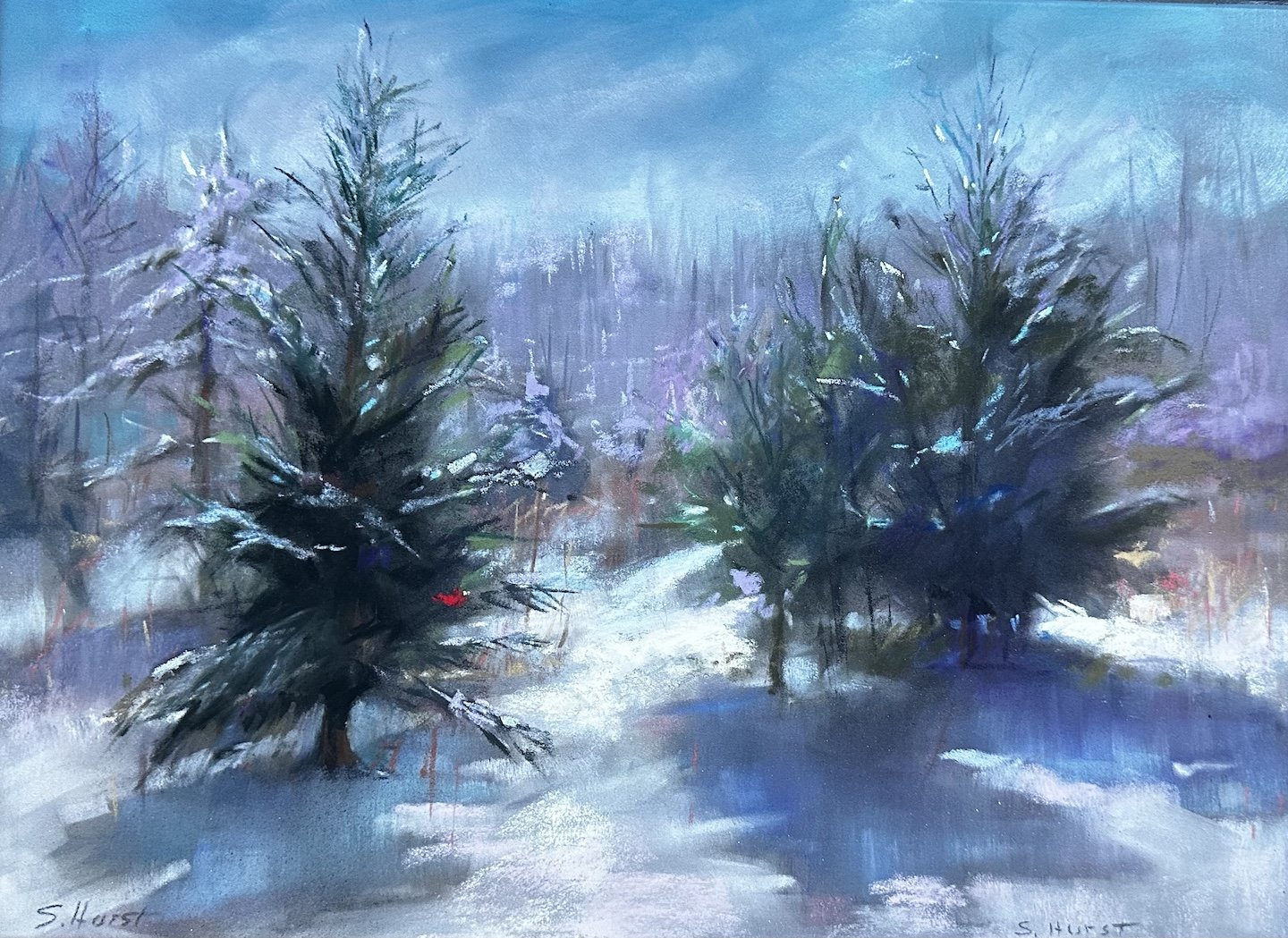
AAS: Susan, are you originally from Arkansas?
SH: I grew up in Findlay, Ohio. My family moved to El Dorado, Arkansas when I was still in high school. My father worked in management for Cooper Tire, and they transferred him to the southern plant. Most of my adult years I have lived in Arkansas. I married Garland Hurst from Arkansas, and we raised our two children, Edmond Hurst of Little Rock and Sarah Stiefvater of Conway, in Sheridan. His business took us to Ohio (near my hometown), Dallas and then Atlanta. When he died in 1999, I made the decision to move back to Arkansas and have been here since 2001. This is the longest I have ever lived ANYWHERE. I consider Arkansas my home.
AAS: When did you first become interested in painting?
SH: I started drawing profusely when I was very young. My dad would bring home used mimeograph paper from work that the children (four of us still at home) could use as we wanted. My family had limited means, so this was a luxury! I still have some of those drawings. I drew people in the magazines, my friends, myself. Soon I was getting requests at school from my classmates. I was giving the portraits away and my art teacher said I needed to charge for them. At 12 years of age, I was taking commissions. I remember being astounded my friends would pay a $1 for a used piece of paper that I had drawn on the back side of. I bought better paper and started charging more!
Two of my aunts were influential to me as a child. One aunt took me to the Toledo Art Museum and the Chicago Art Museum on numerous occasions. I fell in love with the paintings. In a family of 8 children there were few vacations and fewer exposures to the art world, so this was huge to me. Another aunt was quite an artist herself and when I visited her, she would take me to the local Art League meetings. I was in my teens, but I had already decided this is what I wanted to do. She was very encouraging.
AAS: You studied with some notable artists including portrait artist Daniel Greene. What were those experiences like? What do you think were some of the most important things you learned?
SH: My times studying with the giants in their field are notable. Their teachings and work ethics stay with me. When I am at the easel different ones come to mind when I’m painting. From Daniel Greene I learned the importance of lighting the subject and controlling value to make the subject a sold form. He was not the most fun instructor for sure – a bit grumpy – but his words still come back to me. The workshop was held in his Barn Studio in New Hampshire. He has since passed away. I was fortunate to have studied with him.
From Vena McAninich (Arkansas portrait artist) I learned the value of self-discipline. in one of her lectures to a small group of students studying oil painting portraitures she cautioned, “The mark of a professional is to work through your problems.” For her to admit she had difficulty at times was a revelation to me. I had already discovered in my career not every painting falls into place-some paintings need a little nudging-some more than others. When I feel frustrated her words come back to me.
Guido Frick is a German Impressionist artist I had the great privilege of studying extensively with. He has a great sense of humor. In my early studies with this master my application of paint was too thin. He said I was merely “toning” my canvas, my brushwork looked like “cat scratches.” The only way I could bring myself to use the copious amounts of oil paint he demanded was to buy cheap paint. I buy better paint these days and I try not to think about the cost-it is just the price we pay to be an artist. I hope he would be pleased with my more expressive brushstrokes.
Bruce Peil is a Texas landscape artist. From him I learned the value of really studying what was happening in the landscape. He is one of the most sensitive artists I have ever come across. To meet him you would be surprised to learn that this former construction worker, short and rather stocky, could be so sensitive to subtle shifts in color of the landscape. I also observed from Bruce that artists should appreciate where they live. The most successful of his paintings are the fields that surround his property.
“I find it inspiring and exciting to continue to learn and challenge myself. An artist is never through exploring and learning.”
AAS: You said you enjoy portraiture and you’ve done some amazing portraits. Before we talk about specific portraits, what is it about portraits that excites you?
SH: I love painting portraits. Each face is so different and each person has their own color palette that is so unique to that person. I find it fascinating to try to capture that and their expression. My favorite is to work from life so I can attain a better sense of their particular qualities. There is no substitute for a smile just beginning on a person’s face – the camera cannot capture that.
Young Girl in Blue, 20” x 16”, pastel
AAS: One of my favorite portraits is Young Girl in Blue. Pastel gives it a very special quality. Tell me about it.
SH: This portrait was painted from a photograph the mother provided. I did have the opportunity for her to pose for the portrait near the end. I always get something from the live sitting that I cannot get in the photograph. If the sitter would allow I would do the entire portrait from life. In this portrait I really liked the expression she had looking at the viewer. And of course, those blue eyes and blond hair steal the show. Pastels is the perfect medium to capture those beautiful colors. I used mostly soft pastels-Terry Ludwig and Sennelier brands on sanded pastel paper.
AAS: You are also known for your landscapes, many done plein air. Tell me about Visit to Petit Jean.
Visit to Petit Jean, 20” x 27”, pastel
SH: I have done many plein air (painting on location) oil and pastel sketches at Petit Jean. One particular spot, just down from Mather’s Lodge, I became very fond of for its spectacular view of the valley. This painting captures the last of the day when darkness is going to engulf the whole view. I borrowed from several of the previous year’s oil sketches to complete this rather large pastel in my studio.
AAS: Fisherman’s Cove was done in a looser more expressive style. I just love it. Where was that scene?
Fisherman’s Cove, 11” x 14”, pastel
SH: Fisherman’s Cove is a spot on Monhegan Island, off the coast of Maine I was able to revisit a few years ago. I had painted on Mohegan Island a decade ago with Albert Handell. This island has been popular for artists and bird watchers since the 1900’s. Jamie Wyeth (Andrew Wyeth’s son) owns a home at the edge of the island where I painted. My skills with the pastel landscape had improved so when I was able to go again, I knew I wanted to paint that scene. I took lots of photographs and completed this scene back in my studio. It was cloudy day but that made the perfect backdrop color for the red building. The crazy configuration of the boats is typical of the area. All of those boats and toys had obviously just been thrown there after being used recently. This painting won an award in the National Arkansas Pastel Society Show 2021. It is small but packs a punch.
AAS: Around the Corner looks like it might be a scene from one of your travels. Do you always try to find time to paint when you travel?
Around the Corner, 24” x 18”, pastel
SH: We have a lot of green in Arkansas to paint! One of my favorite escapes is to travel outside of the state to paint. I am always on the lookout for interesting subjects and especially other colors besides green. Around the Corner was painted from my trip to San Miquel de Allende in Mexico several years ago, While I was there, I painted small oil sketches and took lots of photographs. This was taken from one of those photographs, but I was influenced by numerous sketches I had done there. During Covid when we all were so housebound I vowed to resolve old paintings. I completed many of those sketches I had started in Mexico and revisited the photographs. This painting was accepted into the International Association of Pastel Societies Open Division, held every other year in Albuquerque, New Mexico. I won 3rd place in the competition of over 1500 entries in 2024. That also gave me my 5th point to be placed in the Master Circle status for that Society. I had been working for that goal for 7 years.
Tin of Sunflowers, 12” x 9”, pastel
AAS: You also do still life paintings. Tin of Sunflowers is a spectacular interpretation. I love the composition.
SH: Sunflowers are just fun to paint! This was painted as a demonstration for a volunteer class I teach at LifeQuest in Little Rock, a senior citizen enrichment resource. When a demo is given the artist is under some pressure to produce. One hopes it turns out ok without boring the audience too much. This one was done in about 45 minutes. That kind of pressure forces you to make quick decisions and sometimes that works in your favor. You may sacrifice accuracy but gain spontaneity.
AAS: You are very active in the International Pastel Societies, the Arkansas Pastel Society and the Arkansas League of Artists. Why do you think it is important for artists to be a part of the artistic community?
SH: I enjoy the company of other artists in the art organizations I am in. We are fortunate in Little Rock to have the two you mentioned as well as others. I am a Signature Member of the Arkansas League of Artists and the Arkansas Pastel Society. As I mentioned earlier, I am in the Master Circle of the International Association of Pastel Societies. Through these groups I am able to continue my education with professionals as well as be a part of the community of artists. I find it inspiring and exciting to continue to learn and challenge myself. An artist is never through exploring and learning.
AAS: Susan, you just seem to be having a lot of fun painting especially right now. Do you have any particular goals for 2025?
SH: 2025 is shaping up to be a very exciting year for me. I recently joined Art Group Gallery in the Pleasant Ridge Shopping Center off Cantrell. This is a co-op group of artists who are very diverse in medium and subject matter but united in their purpose to be a part of the community. The calendar year has a lot of opportunities to showcase the artists. There will be numerous popup art exhibits and special events. I am excited to have a space where my art can be seen seven days of the week. I will continue to teach a LifeQuest class focusing on pastel most every semester. There are four of us from the Arkansas Pastel Society that teach the class. It’s never too late to learn how to paint. In April I have been asked to be the judge and demo artist for White River Plein Air Event May 7-10 held at Gaston’s Resort, Lakeview, Arkansas. In conjunction with the event, I will be teaching a one-day workshop May 6 on the White River near the Gaston Resort. If anyone is interested they can contact Dana Johnson at 870-656-2057 for more information.
